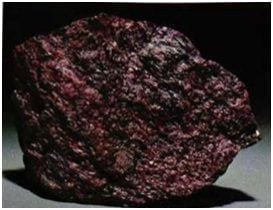Stichtite Value, Price, and Jewelry Information
Stichtite is not facetable, but the pink color is quite striking in cabochons. Cut stones are especially beautiful when there are other minerals present to add splashes of green and yellow. This material somewhat resembles a pink, granular material from the USSR referred to as canasite.
Stichtite is not facetable, but the pink color is quite striking in cabochons. Cut stones are especially beautiful when there are other minerals present to add splashes of green and yellow. This material somewhat resembles a pink, granular material from the USSR referred to as canasite.
Start an IGS Membership today
for full access to our price guide (updated monthly).Stichtite Value
Dimorph of Barbertonite.
Has a greasy feel.
Streak: White to lilac.
Optics: o=1.545; e =1.518.
Uniaxial (-).
Shadow edge seen at about 1.53.
Occurrence: In serpentine rocks, usually associated with chromite.
Black Lake, Quebec, Canada.
Dundas, Tasmania: mixed with green serpentine.
Transvaal, South Africa; Algeria.
Comments: Stichtite is not facetable, but the pink color is quite striking in cabochons. Cut stones are especially beautiful when there are other minerals present to add splashes of green and yellow. This material somewhat resembles a pink, granular material from the USSR referred to as canasite.
Name: After Robert Sticht of Tasmania, general manager of the Mt. Lyell Mining and Railway Co.
Joel E. Arem, Ph.D., FGA
Dr. Joel E. Arem has more than 60 years of experience in the world of gems and minerals. After obtaining his Ph.D. in Mineralogy from Harvard University, he has published numerous books that are still among the most widely used references and guidebooks on crystals, gems and minerals in the world.
Co-founder and President of numerous organizations, Dr. Arem has enjoyed a lifelong career in mineralogy and gemology. He has been a Smithsonian scientist and Curator, a consultant to many well-known companies and institutions, and a prolific author and speaker. Although his main activities have been as a gem cutter and dealer, his focus has always been education. joelarem.com
Related Articles
Black Diamond Value, Price, and Jewelry Information
Chameleon Diamond Value, Price, and Jewelry Information
Gray Diamond Value, Price, and Jewelry Information
Green Diamond Value, Price, and Jewelry Information
Latest Articles
Celebrity Engagement Rings
Ruby and Sapphire Grading Tools
Cerussite Value, Price, and Jewelry Information
Ouro Verde Quartz: History and Treatment
Never Stop Learning
When you join the IGS community, you get trusted diamond & gemstone information when you need it.
Get Gemology Insights
Get started with the International Gem Society’s free guide to gemstone identification. Join our weekly newsletter & get a free copy of the Gem ID Checklist!
